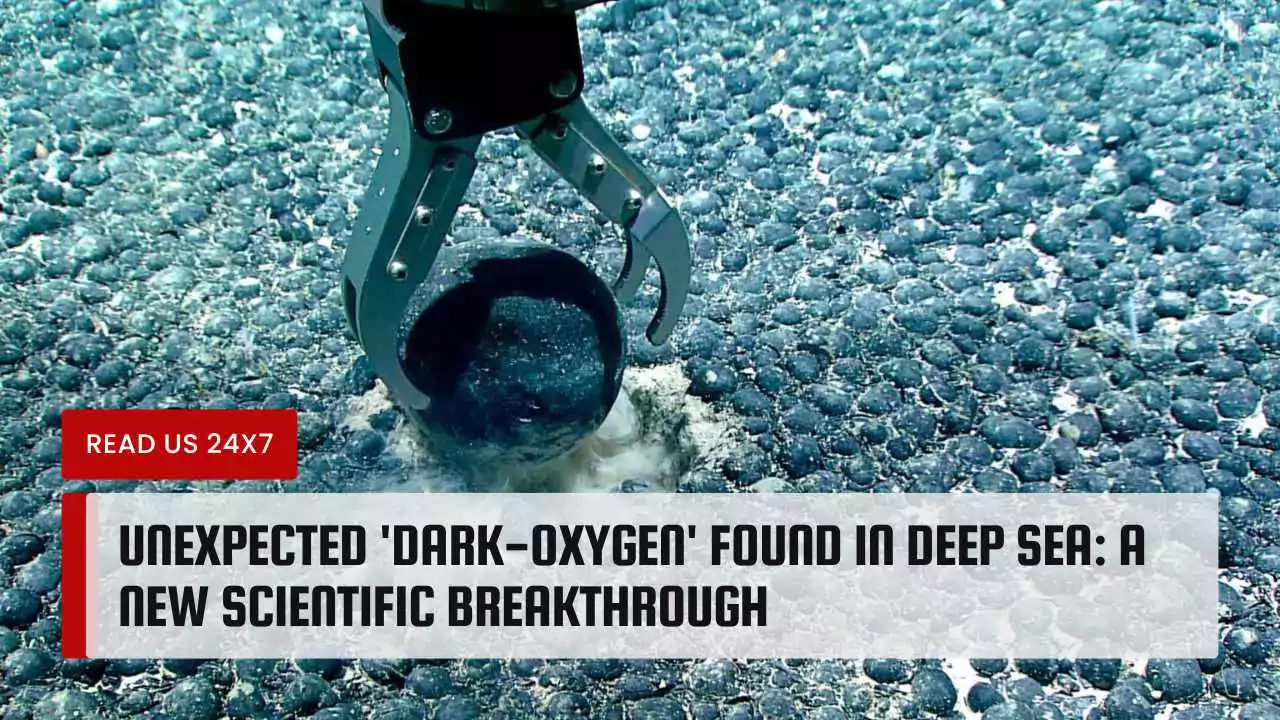Scientists have recently found a new way that oxygen is produced in the deep ocean, called “dark oxygen.” This discovery shows that oxygen can be made without sunlight, challenging the long-held belief that only marine plants through photosynthesis could create oxygen. This finding alters our understanding of ocean ecosystems and raises new questions about deep-sea mining’s impact on these habitats.
Exploring ‘Dark Oxygen’
‘Dark oxygen’ refers to oxygen produced in the absence of light. It occurs at depths in the ocean where sunlight cannot reach, typically over five kilometers deep. In these dark environments, lumps of metal known as metallic nodules help split seawater into hydrogen and oxygen. This process is similar to how batteries work. The nodules generate electric currents that lead to the electrolysis of seawater, separating its components.
Discovery Process
The journey to this discovery began with deep-sea research in an area between Hawaii and Mexico known as the Clarion-Clipperton Zone. Here, researchers collected metallic nodules that litter the seabed. Initially, scientists observed a high level of oxygen production but did not understand its source. They believed that oxygen could only come from sunlight-driven processes.
Over time, scientists explored the properties of these nodules. They noted that the nodules naturally occur when dissolved metals in seawater accumulate on debris. This process takes millions of years, and the nodules contain valuable metals, such as lithium and cobalt. The researchers conducted experiments, measuring the voltage on the surfaces of these nodules. The findings showed that the electric currents generated were comparable to those found in common batteries. This electricity could break down water molecules, leading to the release of oxygen in complete darkness.
Effects of the Discovery
Influence on Oceanic Ecosystems
The discovery of dark oxygen has significant implications for deep-sea ecosystems. The oxygen produced by these nodules may play a crucial role in supporting marine life that exists in extreme depths. Many species rely on dissolved oxygen to survive, and this newly identified process could be a vital source for that oxygen. The researchers emphasize that understanding these ecosystems is critical, as many species are still unknown.
If mining companies extract these metallic nodules, they risk disrupting the delicate balance of life in the deep ocean. The potential destruction of habitats could lead to the loss of not only the species that depend on the oxygen provided by nodules but also the overall ecosystem health.
Advocacy for Enhanced Deep-Sea Protection
In light of this discovery, many marine scientists are advocating for stronger protections for deep-sea environments. Over 800 scientists from various countries have signed petitions urging a pause on deep-sea mining activities. Their concerns focus on the irreversible damage such mining could inflict on ecosystems that are already barely understood.
Professors involved in the research have emphasized the need for more detailed studies before any mining occurs. They argue that the information gathered can guide environmentally friendly practices if mining is allowed to proceed. Ensuring that the deep ocean remains a healthy habitat for its unique life forms is essential, as many areas of the ocean have only recently begun to be explored scientifically.
Understanding ‘dark oxygen’ also raises broader questions about oxygen production beyond Earth. The similar processes observed on other celestial bodies could indicate the potential for life elsewhere in the universe. These revelations from the deep sea can inform our search for life in other habitats.



